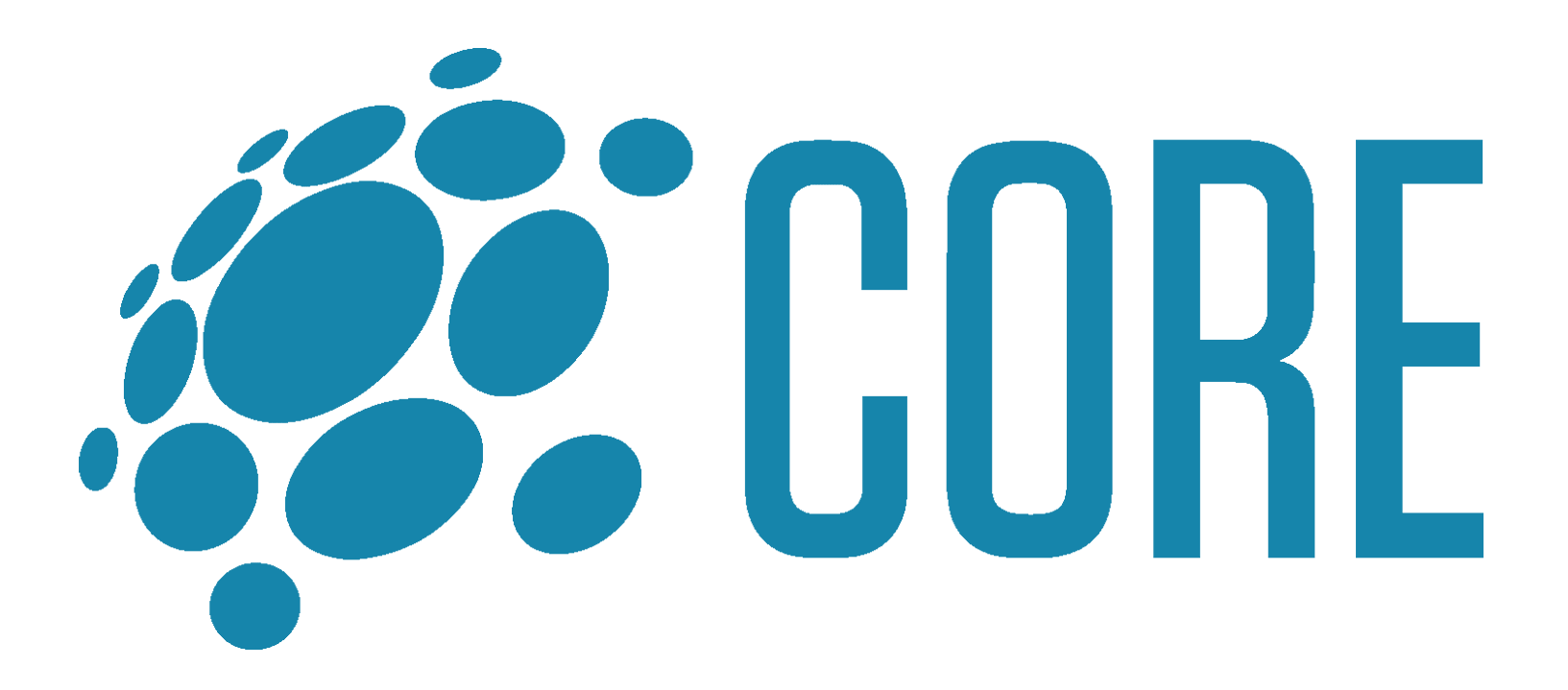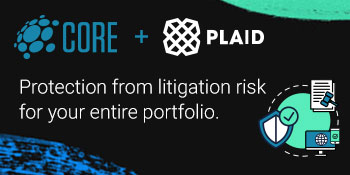MeiraGTx Announces An Oral Presentation And Eight Posters At The European Society Of Gene And Cell Therapy 2023 Annual Congress
Author: Benzinga Newsdesk | October 24, 2023 08:34am
MeiraGTx Holdings plc (NASDAQ:MGTX), a vertically integrated, clinical stage gene therapy company, today announced the Company will exhibit eight posters and deliver one oral presentation at the European Society of Gene and Cell Therapy (ESGCT) 2023 Annual Congress, which is being held from October 24-27, 2023, in Brussels, Belgium.
"The number of acceptances for presentation at this year's ESGCT congress underscores our commitment to remain at the forefront of genetic medicine by developing a new generation of therapies for multiple indications, including xerostomia and ALS," said Alexandria Forbes, Ph.D., president and chief executive officer of MeiraGTx. "The collective data presented provide further clinical and preclinical validation of our platform and reflect the progress we continue to make, particularly in riboswitch and neurodegenerative programs. We look forward to sharing data at ESGCT highlighting our innovative pipeline, manufacturing, and R&D capabilities."
The posters will be available on the Posters and Publications page of the Company's website.
The details of the oral and poster presentations are below:
Oral Presentation OR82: Preclinical Efficacy of AAV-hUPF1 with an optimized vector genome and novel CNS capsid: Gene Therapy for ALS and FTD
Friday, October 27th at 11:00-13:00 CEST in Shed 2B (3rd talk)
Session 11b: CNS and Sensory Disease III
ALS is a progressive neurodegenerative disease that affects neurons in the brain and spinal cord. Here, we present preclinical efficacy of AAV-hUPF1 in multiple models of ALS. hUPF1 is an RNA helicase that regulates NMD that we have optimized for AAV gene therapy of ALS.
At 4.9 kb, the optimized hUPF1 construct is 1.5 kb smaller than the original, thus offering AAV packaging and manufacturing benefits while demonstrating greater efficacy. When tested in vitro, the optimized AAV-hUPF1 rescued toxicity in both the TDP-43 and C9orf72 iNeurons models, at lower MOIs than the original. Optimized AAV-hUPF1 also rescued the pathophysiology of neurons derived from C9orf72 patient cell lines. Transduction in C9 patient-derived neurons indicated target engagement with down-regulation of C9 intron containing transcripts and known NMD targets. AAV-hUPF1 also showed in vivo efficacy in FUS transgenic mouse. Transduction of ~36% of spinal neurons was sufficient to drive significant rescue with surviving motor neuron count comparable to WT level.
Furthermore, we developed a novel AAV capsid that expresses in neurons of both the brain and spinal cord when administered by ICM in mice. This ideal pattern was confirmed in NHPs with transduction that achieved levels sufficient to provide functional rescue in an in vivo model. The prospect of an efficient capsid for CNS delivery is aligned with our therapeutic goal of minimizing AAV exposure while maintaining strong transduction. Together, the evidence in in vitro and in vivo with TDP-43, C9orf72, and FUS models suggests that hUPF1 delivered by MeiraGTx vector is agnostic to genetic background and shows promise in treating ALS.
Poster #008: Results of a phase 1 open-label, dose escalation study of gene therapy with AAV2-hAQP1 as treatment for radiation-induced xerostomia and parotid gland hypofunction
Category: AAV & non integrative vectors
In radiation-induced xerostomia, the normal architecture and function of salivary glands are significantly disrupted or destroyed. AAV2-hAQP1 vector expresses the human Aquaporin 1 (hAQP1) gene delivered using the AAV2 capsid. When hAQP1 is expressed in cells of the disrupted glands, the cells become permeable to water. Water flows down the hydrostatic pressure gradient through the salivary duct and into the mouth.
In this study AAV2-hAQP1, at doses ranging from 1 × 1011 vg/gland to 3 × 1012 vg/gland, was administered to one (unilateral) or both (bilateral) parotid glands via intraoral, retroductal cannulation of Stensen's duct. Key inclusion criteria for study participants were a history of head and neck cancer, a minimum of 5 years since final radiotherapy treatment (2+ years if HPV+), the presence of grade 2/3 late xerostomia, no evidence of cancer recurrence or second primary, and abnormal parotid gland function. Key exclusion criteria were a history of autoimmune disease affecting the salivary glands and a hemoglobin A1c greater than 7%.
Safety parameters included assessments of adverse events, physical examination observations, clinical laboratory results, and electrocardiogram findings. Efficacy assessments included participant completion of the Xerostomia-specific Questionnaire (XQ) and Global Rate of Change Questionnaire (GRCQ). The XQ is a patient reported outcome measure consisting of 8 symptom-specific questions the participant rates from 0 (not present) to 10 (worst possible). The sum of all ratings (0-80) provides an overall measure of symptom burden. The GRCQ is a patient reported outcome tool that has been adapted for xerostomia. The GRCQ first asks the participant if their dry mouth is "better", "worse", or "about the same" following treatment. If the participant reports "better" or "worse," they are then asked to rate the degree of change on a scale from 1 to 7, with 1 being the smallest change and 7 being the greatest change. A score of 2 or above is important to the patient. To evaluate the biologic activity of AAV2-hAQP1, the change from baseline to Month 12 in whole saliva flow rate was assessed.
A total of 24 adults were enrolled in the study, with twelve participants treated unilaterally and twelve treated bilaterally. AAV2-hAQP1 was safe and well-tolerated at all dose levels, with no treatment-related serious adverse events or dose limiting toxicity.
At Month 12, 16 of the 24 participants had an improvement of ≥8 points in XQ score, and 18 of the 24 reported important improvement in xerostomia symptoms relative to baseline on the GRCQ. In bilaterally treated participants, the average percent increase in unstimulated whole saliva flow rate at Month 12 post-treatment relative to baseline was 82.1%. On all efficacy measures, greater improvement was observed in bilaterally treated participants than in those treated unilaterally.
Poster #116: fDISCO evaluation of AAV mediated gene expression upon different routes of administration
Category: AAV & non integrative vectors
Detection methods to assess gene transfer mediated expression of reporter proteins in tissue requires to dissect or slice the sample, during which the three-dimensional (3D) structure is lost. On the other hand, live imaging often does not provide enough resolution to identify reporter protein expression on a cellular level. Here, we have tested whether fDISCO (3D imaging of solvent-cleared organs with superior fluorescence-preserving capability) could overcome these limitations. To this end, DBA/1 mice were injected intraarticularly (IA), intramuscularly (IM), or intravenously (IV) with AAV encoding fluorochrome mGreenLantern (mGL). Hindlimbs and livers were isolated three weeks after administration, followed by fDISCO tissue clearing. Cleared tissues were imaged by a light-sheet fluorescence microscope, followed by image stitching to create the 3D structure of the sample. The fluorescent signal of mGL was detectable at the cellular level in the tissue. The highest number of mGL-expressing cells were found in the injected muscles (gastrocnemius or quadriceps) of IM groups. IA group showed visible mGL expression in muscles around the joint. IV group showed the lowest number of mGL-expressing cells in the muscles throughout the entire hindlimb. All routes of administration resulted in mGL expression in the liver correlating with the total vector dose injected per animal. In conclusion, fDISCO is able to capture the complete histological information of fluorescent reporter signal, thus being a suitable method to study the AAV-mediated reporter expression on the cellular level in 3D tissue samples.
Poster #122: Development of alternatives to Triton X-100 cell lysis for AAV2, AAV5 and AAV8 primary recovery
Category: AAV & non integrative vectors
Triton X-100 is an effective detergent for recovering biological products from intracellular compartments, but its use is now prohibited by Registration, Evaluation, Authorisation and Restriction of Chemicals (REACH) regulations as its degradation generates a compound that negatively impacts aquatic life. This work aimed to develop alternative methods to Triton X-100 for Adeno-Associated Virus (AAV) recovery from Human Embryonic Kidney 293 cells which were REACH-compliant, Good Manufacturing Practice-compatible, did not affect product quality and showed comparable product recovery relative to lysis with Triton X-100. Two alternative AAV release methods were evaluated for AAV2, AAV5 and AAV8 serotypes: 1) A detergent-free hyperosmotic release method was initially tested at microplate scale using a Central Composite Design of Experiment approach, before scaling up to 250 mL stirred tank reactor (STR) scale. 2) When not suitable, a lysis method using Deviron C16 detergent was assessed at 250 mL STR scale with concentrations ranging from 0.1 to 0.5%. Finally, successful conditions for either method were scaled up to 10 L STR scale. For AAV8 serotype, a hyperosmotic AAV release method employed the addition of 400 mM NaCl and incubation for 2 hours, leading to a ~70% VG recovery relative to the legacy Triton X-100 method. For AAV2 and AAV5 serotypes, a 0.5% Deviron C16 lysis method proved most suitable, resulting in VG recoveries of 87% and 97% relative to AAV release with Triton X-100, respectively. No downstream process changes were needed to accommodate these alternative methods. Furthermore, both methods were scalable to 10 L STR scale, and process-related impurities including residual DNA and Host Cell Proteins, as well as product potency, were not impacted by these methods. In conclusion, this study demonstrates two optimized alternative AAV release methods to substitute the use of Triton X-100 that showed comparable product recovery and product quality profiles.
Poster #167: Potency assay cell line development for ocular gene therapy vectors
Category: AAV & non integrative vectors
When producing GMP AAV drug products, the ability to assess their potency is an essential part of release and stability. Cell-based potency assays are a regulatory requirement for commercialisation of AAV gene therapies but poor AAV in vitro transducibility as well as inability to test expression due to the use of tissue-specific promoters is hindering the development of efficient and robust assays. Similarly, basic pre-clinical research, where easy-to-implement tests for faster paced experiments and iterations are desirable, suffers from the same limitations. We therefore set out to examine ways with which to increase vector transducibility as well as establishing ocular promoter trans-activation in the most commonly used cell lines (HEK293 and HeLa). We assessed different methods to increase the transducibility of AAV5 and AAV8 vectors as well as trans-activate photoreceptor-specific (Rhodopsin kinase) and RPE-specific (RPE65) promoters. In dose-ranging experiments, we identified potent dCas9-mediated trans-activators for both promoters and established exogenous factor supplementation that increased the transducibility of both capsids multiple folds over baseline. Further studies will enable us to combine these in an in vitro cell-based potency assay platform for GMP batch release and stability testing.
Poster #324: Use of mechanistic modeling to design a platform process for the separation of full and empty AAV capsids
Category: Manufacturing
Adeno-associated viruses are a relative newcomer to the field of biopharmaceutical modalities and are used to deliver a therapeutic gene to a patient. During their upstream production, separate cellular processes are used to produce the viral capsid and the therapeutic transgene, and package the transgene within the capsid. This leads to the expression of empty capsids which must be removed during the downstream process as they may stimulate an immune response in the patient.
The separation of empty capsids presents a challenge due to the similarity in properties between the empty and full capsids. The proportion of empty capsids can vary widely and be as high as 90% depending on the maturity of the upstream process which can further increase the challenge in achieving this separation. Most attempts have focused on using anion exchange chromatography to exploit the difference in charge to achieve this separation.
However, there is a lot of diversity in the published approaches with some groups using different matrix types (resins, membranes, and monoliths), process conditions, and additives. We have previously demonstrated that weak partitioning can be used to maximise the enrichment of full capsids which further increases the available options for this separation.
Establishing a platform process typically involves screening a number of options while using heuristics to narrow the design space and reduce the experimental burden. This typically leads to process options being compared at sub-optimal conditions and there is a risk that the optimal platform may not be identified.
This presentation will focus on work that we have done to demonstrate that mechanistic models can be used to identify an optimal platform process for the enrichment of AAV2 full capsids. In this study, we developed mechanistic models for the separation of full and empty AAV2 capsids for three AEX matrices that had previously shown promise during experimental evaluation.
These models were then used to examine a range of process conditions (salt concentrations, load ratios) and the modes of operation (bind and elute, flowthrough, weak partitioning) and identify the optimum conditions for each matrix. Finally, the identified optimum conditions were verified experimentally.
Poster #334: Improving the elution step in capture chromatography: a mechanistic approach
Category: Manufacturing
Bulk recovery of adeno-associated viruses (AAV) in the capture step is often performed using affinity chromatography. Whilst this technique offers great capsid adsorption, the final recoveries can be lower than expected (< 80%). This disparity between loaded and recovered product suggests there are mechanisms not fully understood in affinity chromatography. To understand this operation a DoE was performed, using an AAV5-based product, to determine the main factors affecting the elution behaviour. It was found that weak acid solutions and the presence of solvents increase the recovery yield of AAV. A genome escape mechanism affecting the recovery of AAV genome copies is suggested, potentially explaining the discrepancies between genome copies and viral capsids mass balances. It was discovered that at certain pHs the VG recovery decreased without VP decreases.
A second DoE was then executed to assess the process parameters affecting the elution of the AAV5 product. The findings from the previous DoE were confirmed with this second model, confirming that solvent use, acid type, and pH were the main factors contributing to a yield increase. It was proved that small changes in the pH exhibited more than 2-fold increase in the recovery yield. These small changes were confirmed with other therapeutic vectors (AAV2 and AAV8).
This work offers insights into the mechanistic effects in the elution of AAV, and how small changes in the process parameters can greatly increase the bulk recovery yield of a therapeutic product; also, it highlights a potentially novel ejection mechanism that can describe unexplained yield losses during the capture step.
Poster #431: Synthetic neuronal promoters that surpass synapsin in the central nervous system
Category: CNS & sensory diseases
The promoter is an essential cis-regulatory element in any DNA-based gene therapy. It directly controls gene transcription and thereby therapeutic protein expression. In the context of genetic medicines, stronger promoter activity may enable a lower vector dosage to achieve therapeutic effect, reducing safety risks associated with high vector dosages, as well as reducing manufacturing costs. In addition to strength, a tissue-specific promoter may further attenuate off-target effects and improve safety outcomes. Two well-known neuron-specific promoters are the human synapsin (hSyn) and the neuronal specifical enolase (hNSE) promoters. We rationally engineered hSyn- and hNSE-based promoters to increase potency while maintaining specificity, thereby creating an improved set of strong, durable, and neuron-specific promoters amenable to CNS gene therapy applications. The size of engineered promoters ranged from 1120 to 1460 base pairs. Potency and specificity were assessed in vitro and in vivo. hSyn and hNSE promoter variants were up to 7.5-fold stronger in transfected N2a cells with minimal loss of cell specificity as measured in HEK293T cells. The top promoter candidate had an 8-fold improvement over the parental hSyn in AAV9-transduced primary cortical neurons. Promoter cell-type specificity and strength was quantified in the mouse central nervous system after AAV9 delivery into the cisterna magna. Our top promoter was more potent in vivo than hSyn as well as CAG, a benchmark constitutive promoter. Together our data identify a synthetic promoter with greatly improved potency for driving therapeutic gene expression in the central nervous system.
Poster #464: Riboswitch-regulated chimeric antigen receptor (RiboCAR) enhances CAR-T cell anti-cancer efficacy
Category: Immunotherapy & CAR T cells
Chimeric antigen receptor (CAR)-T cell therapy is a promising therapy against cancer. However, the uncontrolled CAR expression causes severe CAR-T cell-associated toxicity and CAR-T cell exhaustion, limiting the success of this living drug. Here, we present the development of RiboCAR, a mammalian synthetic riboswitch-regulated CAR expression via small molecule inducer. Unlike previously reported regulatable CAR platforms that utilize viral protease or chemical-induced protein dimerization, RiboCAR contains an RNA ON riboswitch in the coding sequence of a CAR transgene, in which the aptamer functions as a sensor for a specific novel small molecule inducer. The expression level of the CAR gene with the riboswitch completely depends on the presence of the riboswitch inducer, with undetectable CAR in the absence of the small molecule and significant CAR expression that is higher than constitutively active CAR upon maximal small molecule induction. The induced CAR expression diminished after withdrawal of the small molecule inducer. Further, CAR expression is titratable in response to the levels of the small molecule inducer. Consistent with small molecule-induced expression of the CAR molecule, CAR triggered-activation of CAR-T cells is also controlled by the small molecule inducer. More importantly, T cells with RiboCAR showed delayed exhaustion during expansion in the absence of small molecule inducer and enhanced target cell-stimulated T cell activation and anti-cancer cytotoxicity in the presence of small molecule inducer, when compared with T cells constitutively expressing CAR. With a bioavailable small molecule inducer, the RiboCAR-T cell activity can be precisely tuned and "remotely" controlled in vivo, thus improving the efficacy and safety of CAR-T cell therapy.
Posted In: MGTX




